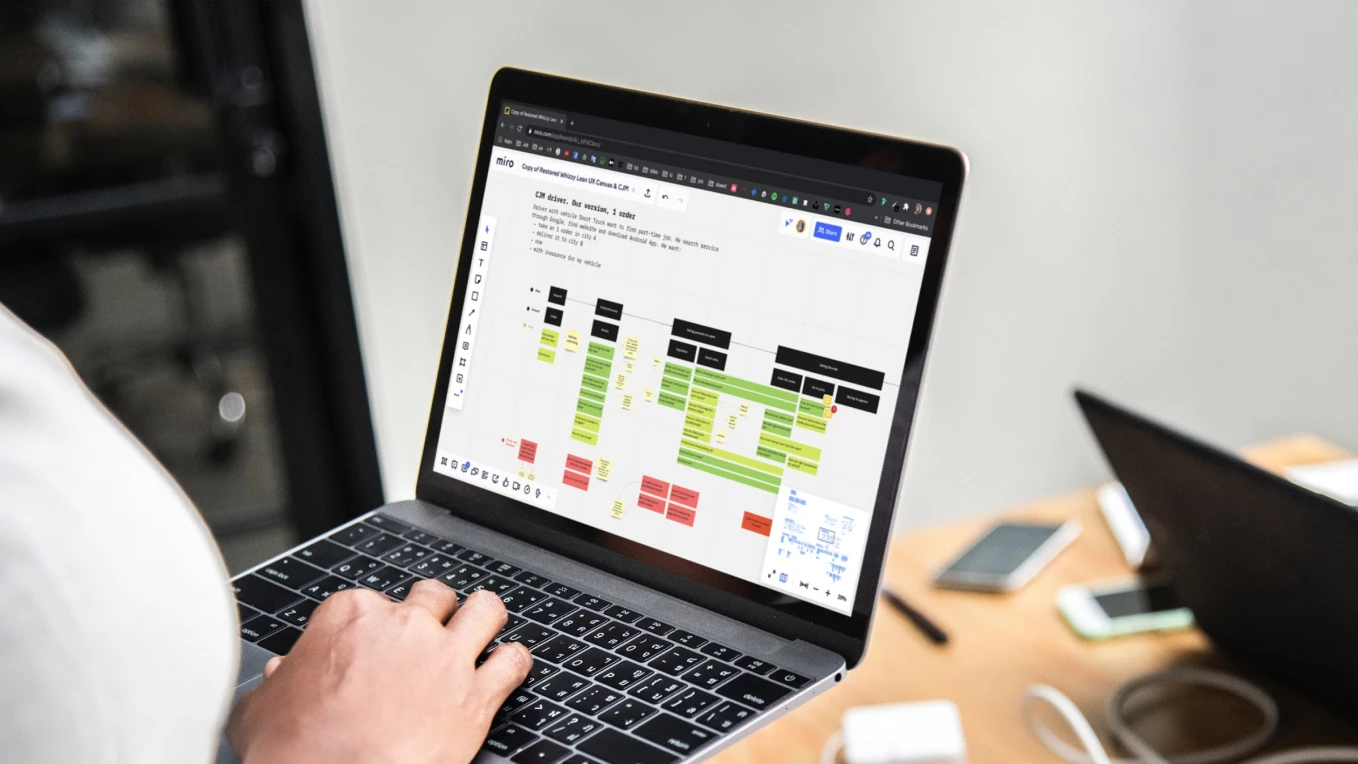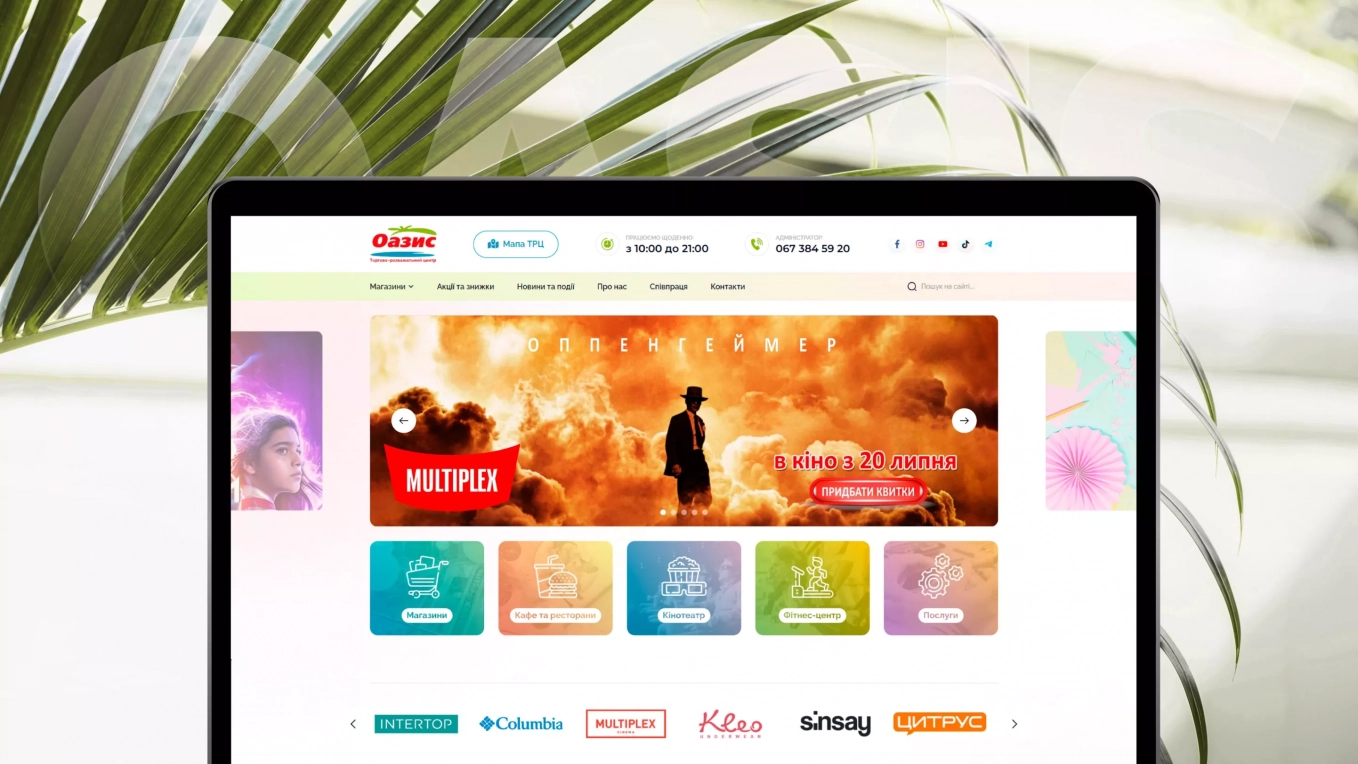Discovery Phase for a Real Estate Company

We noticed no approachable management solution for small property owners and agents in the modern real estate market. How tenants order and pay for services is too complicated and may include phone calls and sometimes require a personal visit.
Task
A client requested a web dashboard to manage the existing tenants, a real estate marketplace for potential new clients and agents, and a mobile application for existing tenants to order services and maintain payments.
Solution
On the initial call with the client, we found out that we are going to work with 3 major roles: a property owner or agent, an existing client (tenant), and a potential client (a new visitor). To gather all the details about each role and related processed we initialed research that included:
- Lean Model Canvas
- CJM for a property owner (agent)
- CJM for a potential client (a new visitor)
- CJM for an existing client (tenant)
- Prototypes for a dashboard, a marketplace and a mobile application
- Product vision
- User stories
- Estimation
Each iteration allowed us to gather new details and feedback from the client. After processing, we had new questions for the next call. We continued until the Stfalcon development team covered all the product features. Miro helped us a lot since we created Lean Model Canvas and Customer Journey Maps using that collaboration tool.
Lean Model Canvas
We used Lean Model Canvas to get an overall understanding of the project structure, features, and composition. We explored the existing solutions and discovered that our value proposition may include a bundle of tools to automate routine operations like checking payments, generating and sending invoices, keeping information about property and history of clients, services, and statuses.
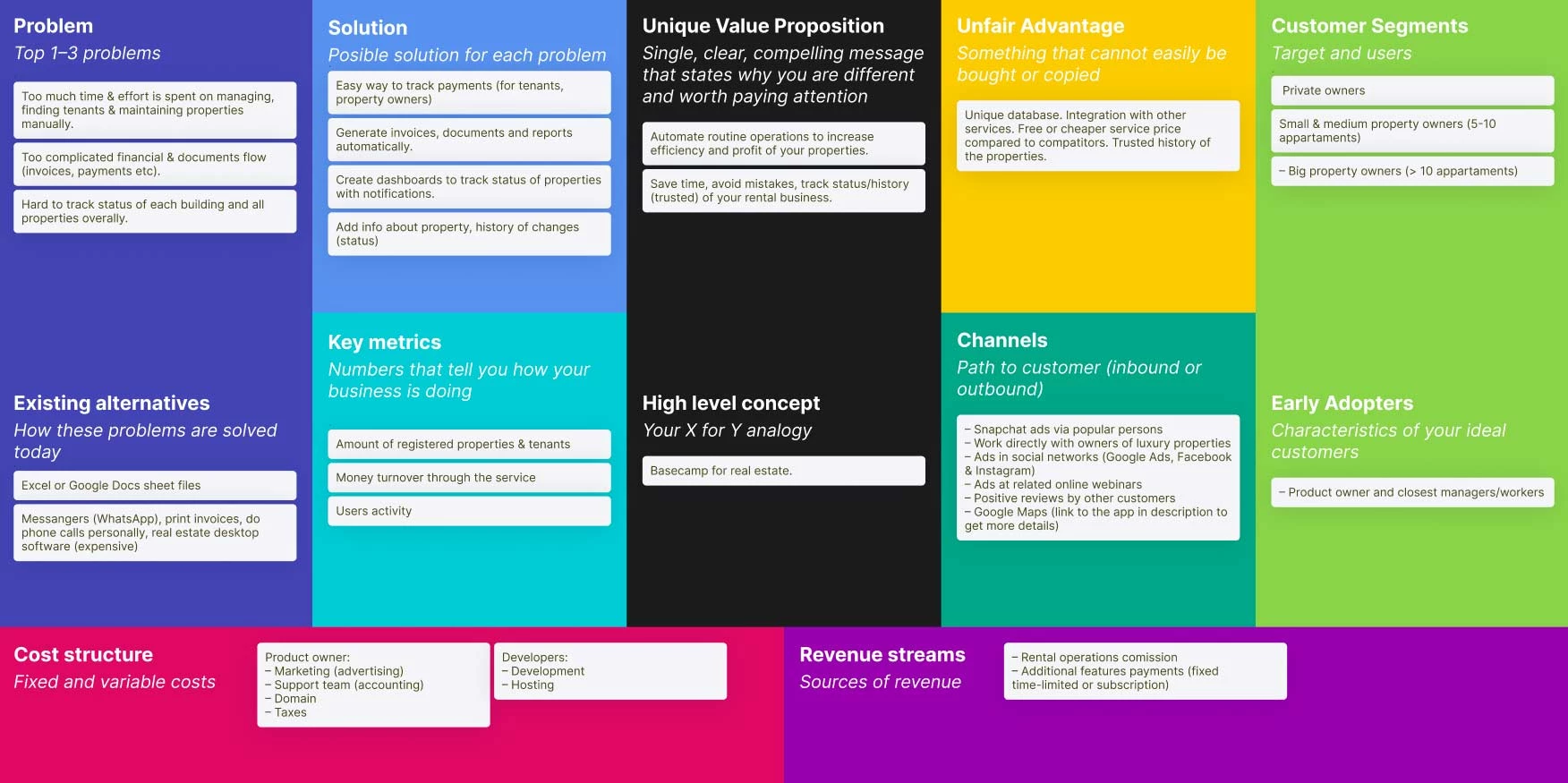
CJM
We got through the Customer Journey Map for each role with the client to understand the customer's motivation, aims, needs, and fears while using our solution. That helped us to understand the steps of the user scenario. We defined three of them:
- A potential client wants to rent a property with a swimming pool for his family (3 persons) with a dog for 6 months in Riyadh.
- An owner wants to add 2 properties to the marketplace to quickly find tenants and automate some routine operations (payments, bills, invoices, contracts, maintenance services).
- A tenant wants to order a repair for a recently broken air conditioning in the evening time (after work).
New visitor flow
Here are some key concerns that we uncovered during the potential client flow research:
- A visitor may be afraid that the photos and descriptions may not correspond to reality,
- someone else may rent the property before him or her.
- Also, it may be tricky to find the property according to requirements
That's why the user should be able to request a property visit, contact an agent, and use flexible filters.
Property owner flow
As an agent or a property owner, I want to not only verify that the service is trusted and provides all the needed features, but I also want to automate and possibly reduce some of my duties, such as to:
- Generate reports and documents for tax reporting,
- Send invoices to the tenants,
- Find interesting proposals of other agents,
- Save time and find managers to delegate some of my responsibilities.
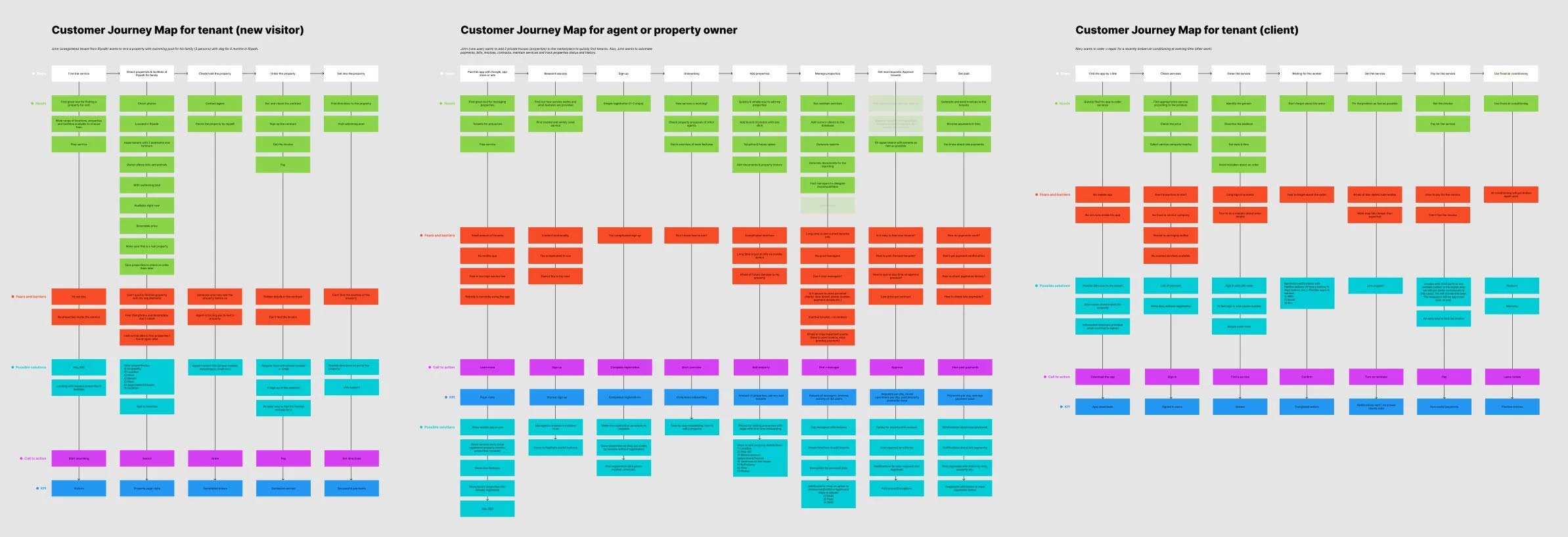
Tenant flow
Ordering a service may be slow and complicated. Our mobile application will :
- Help to find the real estate object in the app: a tenant can use QR-code placed at the entrance.
- Send notifications: SMS or emails will remind the clients about the serviceman visits.
- Allow to pay for services through the app and get an invoice if needed.
Prototypes
Based on the information we’ve got, we created 3 prototypes to cover the needs for each role: the dashboard web app for a property owner or agent, the marketplace for potential clients, and a mobile app for tenants (existing clients). Stfalcon’s project manager also prepared user stories and estimations for both MVP and 2 versions of the product release. The developers (frontend, backend, mobile) helped with a technical review for the client.
Dashboard
The created prototype got a lot of useful features:
- A dashboard with general metrics, income statistics, and recent events (requests & reminders) that can be customized with widgets,
- Property management tools with a map view,
- Payments info with alerts and warnings for pending and past due records.
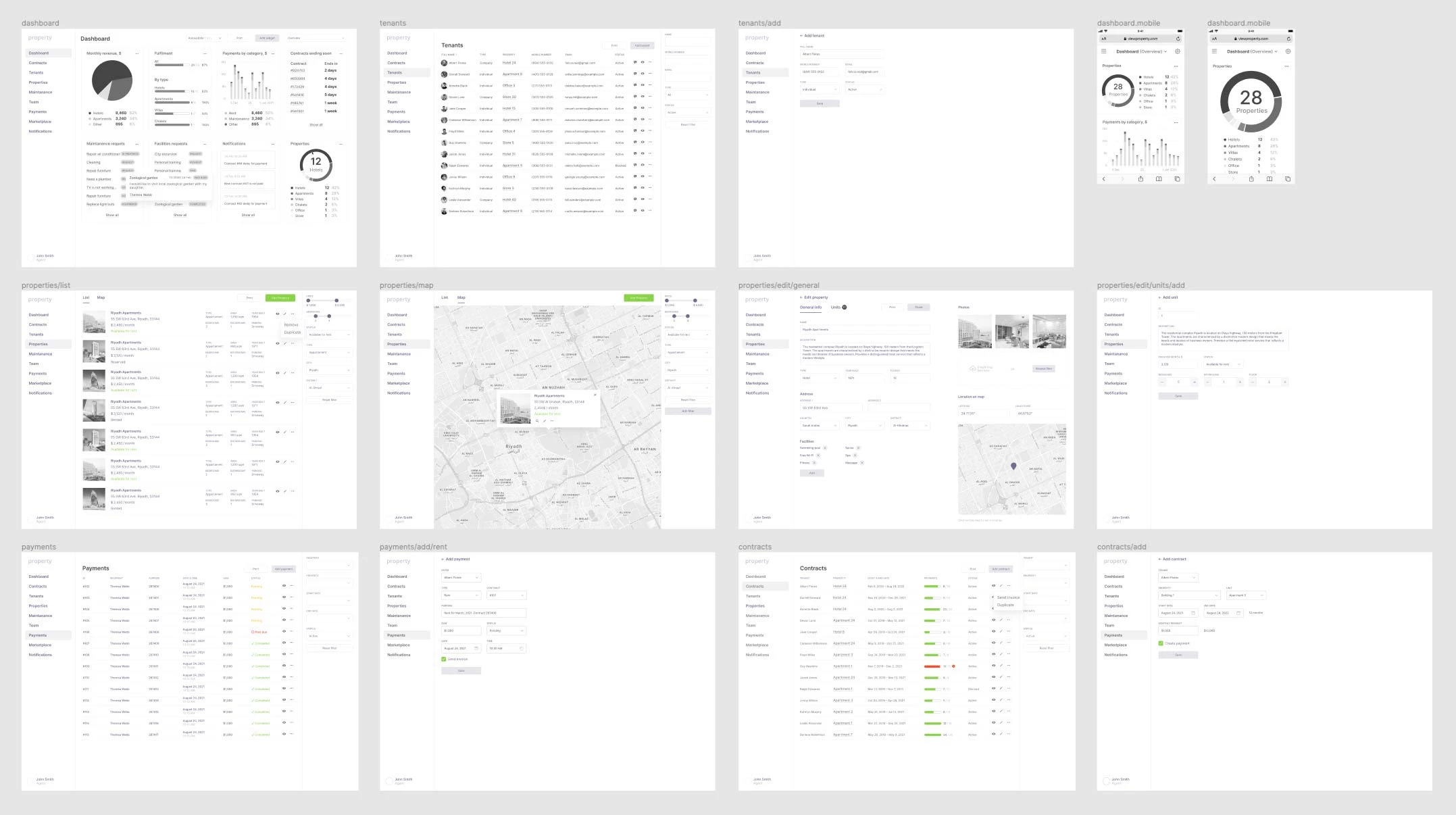
Marketplace
The marketplace helps new visitors to find an appropriate property with a few clicks due to the following features:
- Popular properties highlights,
- Flexible filters,
- Photo gallery,
- Available facilities.
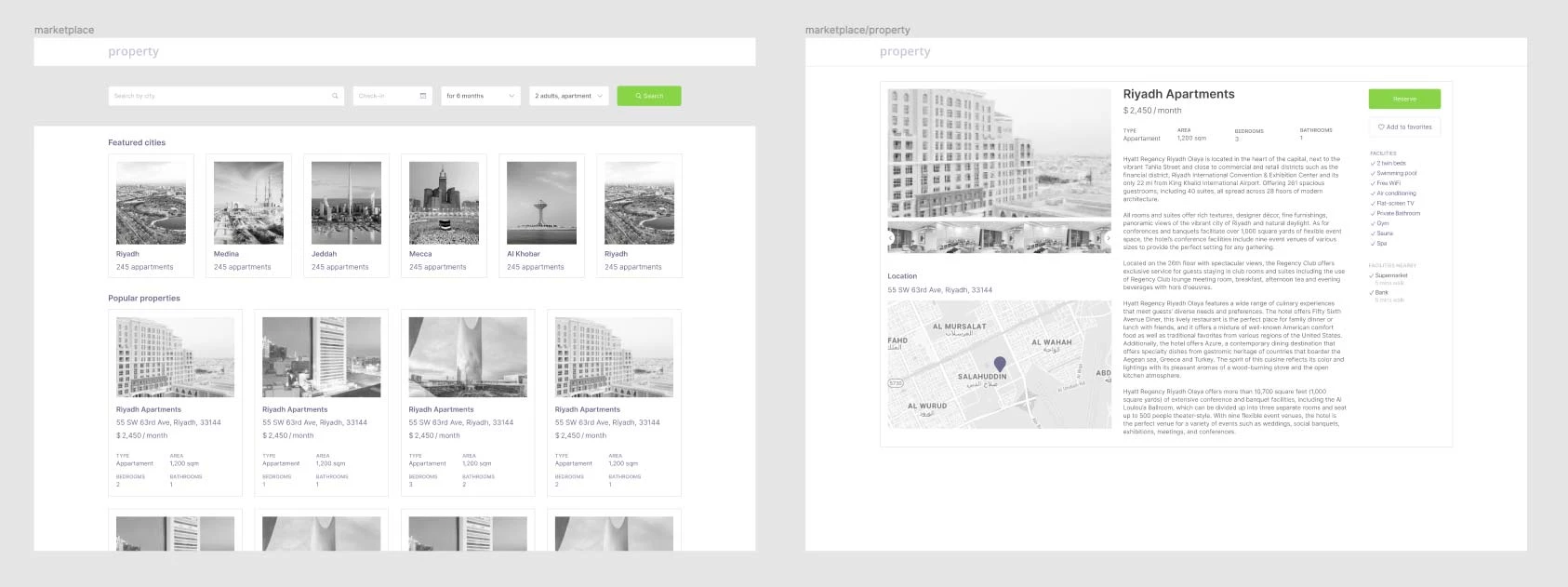
Mobile app
Tenants don't want to spend time on phone calls ordering services and would like to simplify payments, so we provided a tool to:
- Check, view the details, and order services nearby,
- Request maintenance services,
- Remind about rent and pay for it.
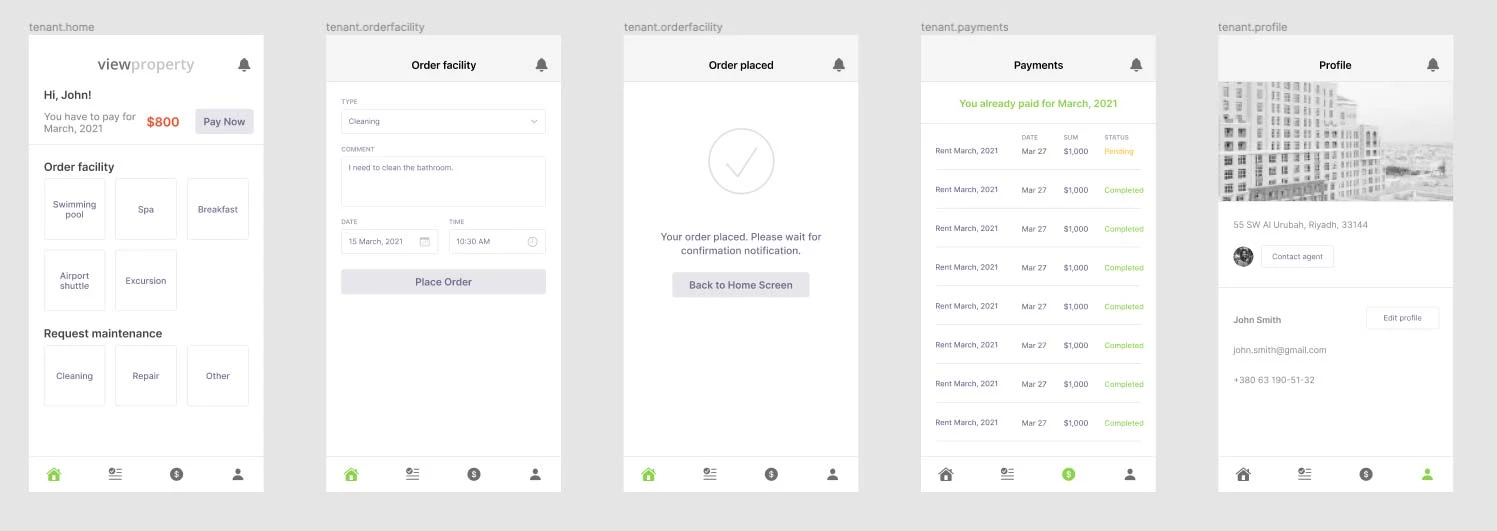
Result

